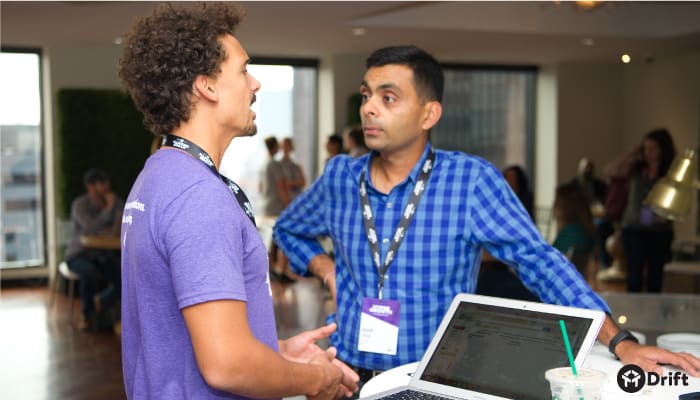Editor’s Note: The following transcript is from Andy Raskin’s HYPERGROWTH 2018 presentation. It has been edited and condensed for clarity. Ready for HYPERGROWTH 2019? You can preorder tickets here.
In his talk at HYPERGROWTH, Andy touched on three key items:
- Switch your messaging from “Why us” (selling your company) to “Why you” (selling the buyer on their own story). If you do it well, you convince them that they are in denial — that the world has changed in such a fundamental way that the status quo path they’re walking along is a road to ruin. Create FOMO by celebrating those who are adapting to the shift and winning.
- Create urgency by naming what’s at stake. In this new, changed world, what do winning and losing look like? Then name the Promised Land – the goal state that guarantees winning, and that you commit to helping customers reach – just like Zuora does with their sales deck.
- Don’t just copy and paste your logo into Zuora’s deck and expect would-be customers to swoon. This is about following principles, not filling in templates. In his presentation, Andy runs through real-world examples of how he’s helped CEOs and their leadership teams implement his Promised Land framework (and how you can too).
Read on for more great content on building your own Promised Land story.
—
The other day I’m walking in the Mission, and I see this sign in front of this Indian restaurant.
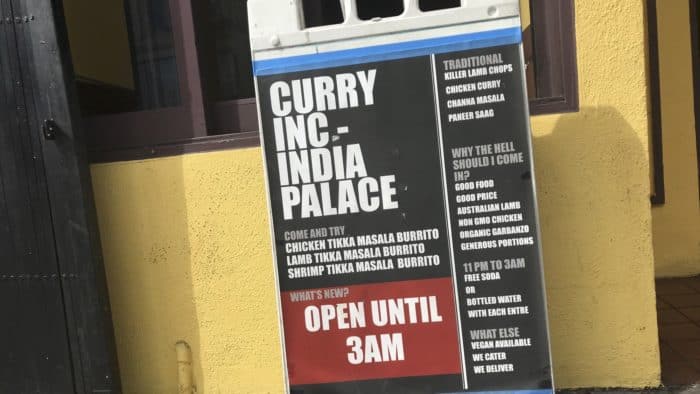
The sign really embodies an approach to strategic messaging I think most companies follow. There’s a list of products and solutions to problems. And then there’s a bunch of reasons under this “why the hell should I come in” title that’s about why these solutions are better than similar ones that you might find elsewhere.
They’re starting with why, but it’s really why us. It’s very self-centered. It’s like, here’s how we solve your problem, and here’s how we’re better than the others. And this seems like a reasonable approach.
I mean, we all do have competitors, after all. And maybe it worked back when markets had few enough players that buyers could ignore the bluster and sort through all the claims, but that’s not what markets look like today.
This is ?
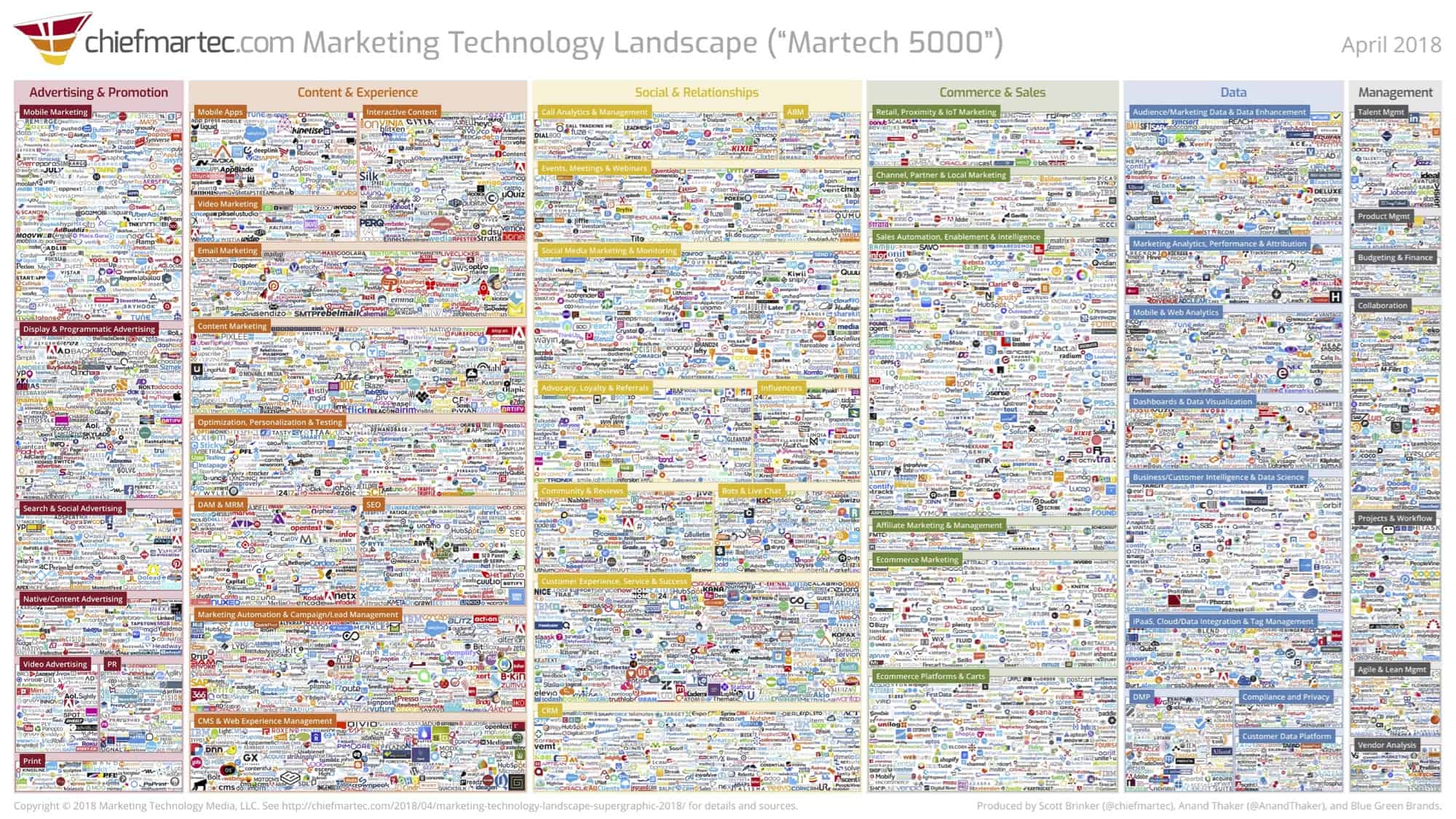
I mean, each of you probably competes, not against a handful of competitors, but dozens all screaming, “Why us?” at customers. I think this is why about a year ago, David Cancel posted this – product differentiation is going away.
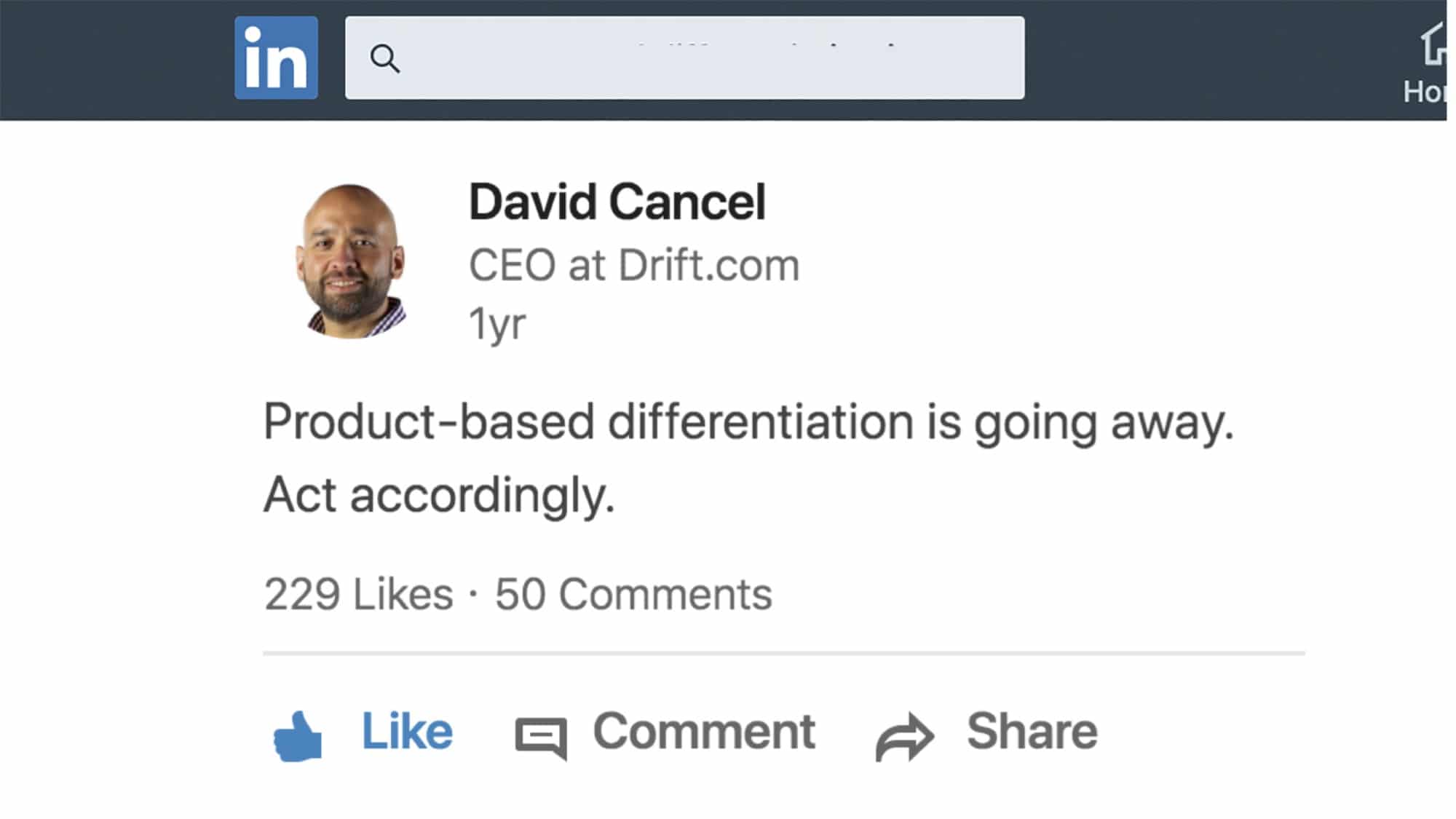
The question of course is, what does he mean by act accordingly? And what does that mean for the rest of us? A few years ago I began to write posts about a totally different approach to telling the story that I saw the most successful companies adopting, the ones like Drift that seemed to be breaking out of the clutter to achieve what you might call brand differentiation. The most well-read one of these has been this one about Zuora.
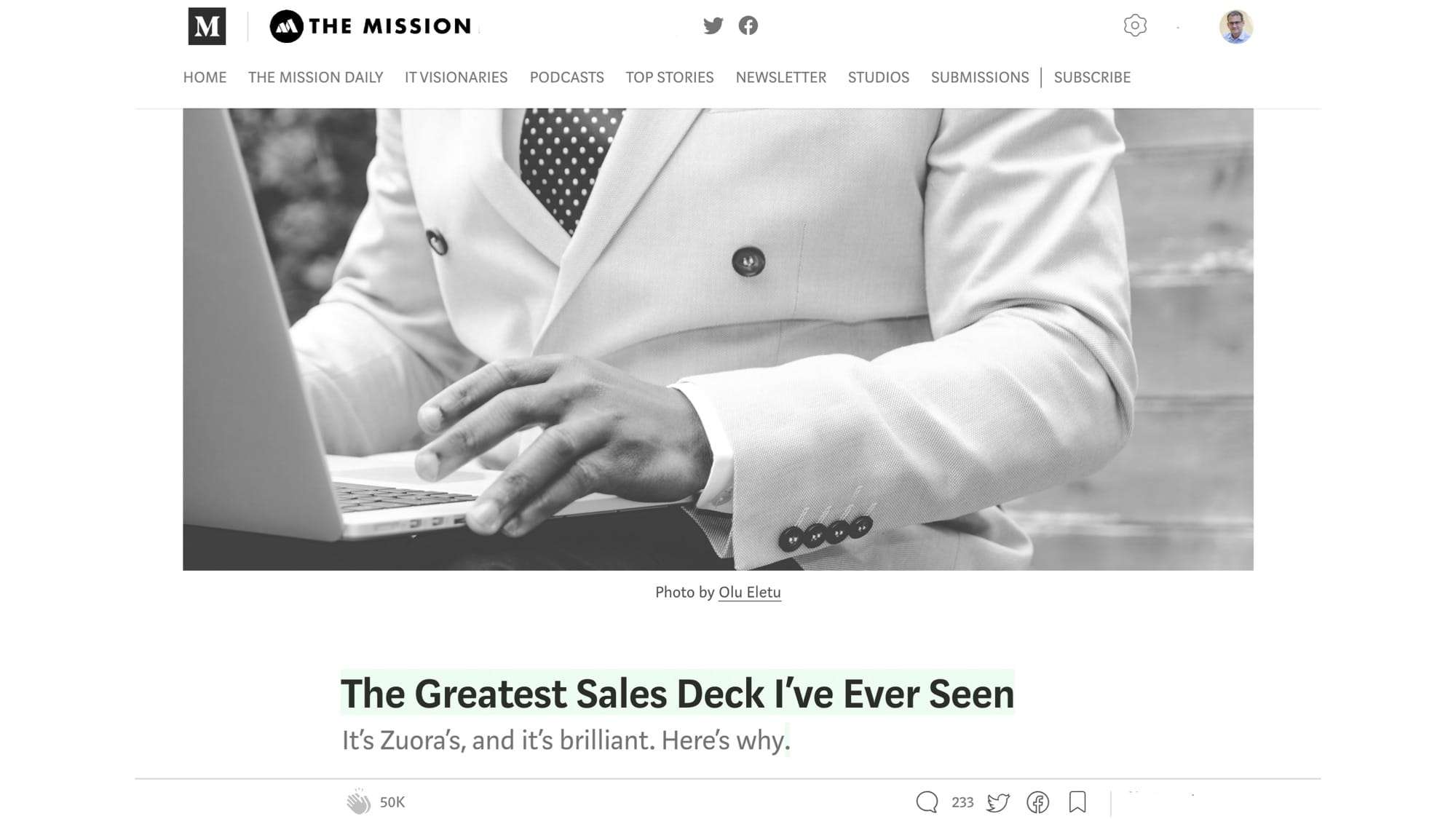
As many of you know, Zuora is a platform for running a subscription business. They recently had a successful IPO, but the way they tell the story hasn’t really changed much since they were actually much smaller. It always starts with some version of this: We are now in a subscription economy. And that’s completely different from “Why us.”
It’s a story about change, about how consumers used to want to own things, but increasingly want the benefits of those things without the hassle of the ownership. And it celebrates those who were quick to jump on, adapt to this shift, and who have won. It creates a bit of FOMO this way.
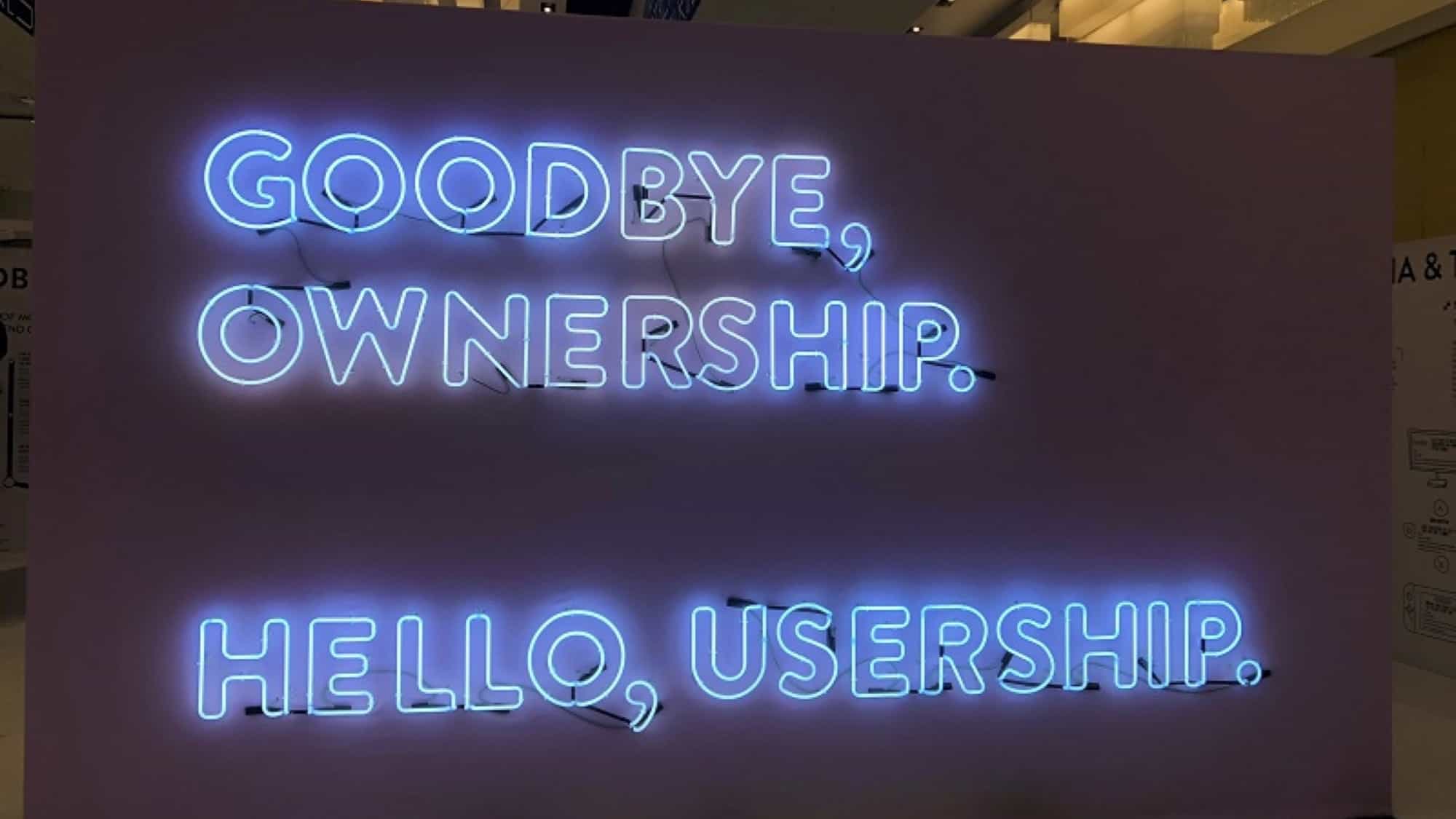
Not Why Us. Why You.
This is not why us. It’s not about Zuora at all. This is why you. And specifically it’s why you NOW. Now, I think we can go overboard in saying that the company story, the pitch, should be like a movie. We are not writing a three-act screenplay here, after all. But there is this moment in many films that can teach us a lot about selling to a reluctant buyer.
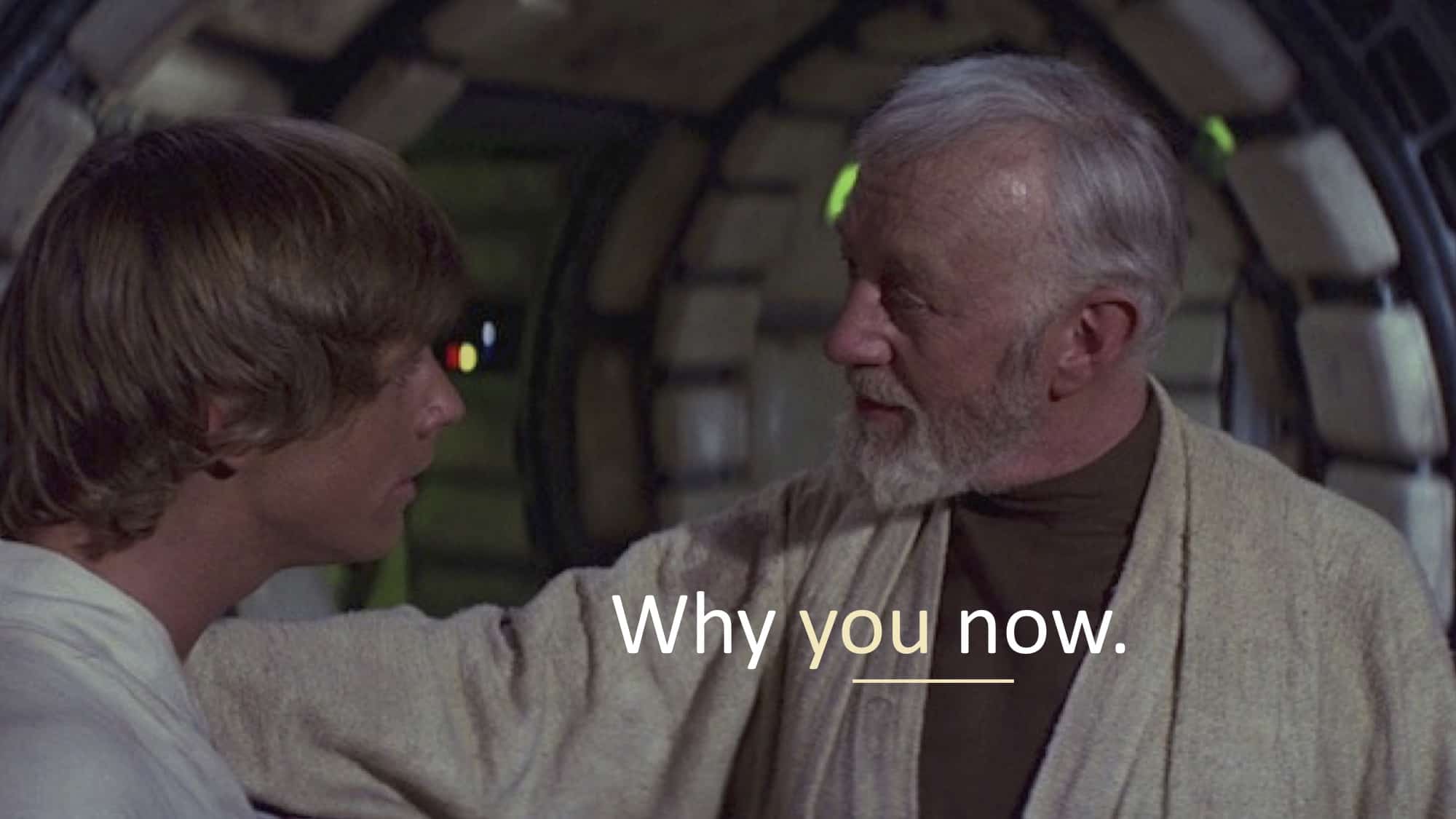
When we first meet Luke in Star Wars, he’s bellyaching about how he’s bored, he wants adventure, he wants to go be a pilot. He sounds like a very eager buyer for light sabers and the Force. So Obi Wan shows up, and he gives him the why us. He shows him the product, lets him demo, drops a little differentiation. “Hey, I knew your dad.” And what does Luke say? He says, “Sounds great, but I really got to get home. I can’t get involved in that.”
Who does this remind you of? Your reluctant buyer. On the scale of horrible miserableness to utter joy, Luke and most of the people you’re selling to, for all their complaining, they’re actually doing okay. I mean, we say sell to pain, but they’re probably not really in pain. They have ups and downs, but they assume life is always going to be okay.
This is the definition of a buyer who sees no urgency, who is not emotionally engaged. So how does a director or your team change that? Well, in Star Wars, Luke is presented with a big change in the world. The Empire kills his family. Now he sees that there are stakes. They’ll probably wind up dead, but if he follows Obi Wan, he has this chance at winning and thriving. Obi Wan even defines the criterion for happily ever after, what I like to call the Promised Land. Luke has to destroy that Death Star.
For Zuora customers happily ever after can be yours if you can turn your customers into subscribers.
Pitch the Promised Land
Now, the formula, the structure of the why you now story, or what I call the Promised Land Pitch, is actually really simple. You name the shift – this epochal shift – you show how this shift creates some huge opportunity and existential threat, basically winners and losers. And we name this, we tease this promised land, the goal state that, if our customers can get there, then it’s happily ever after.
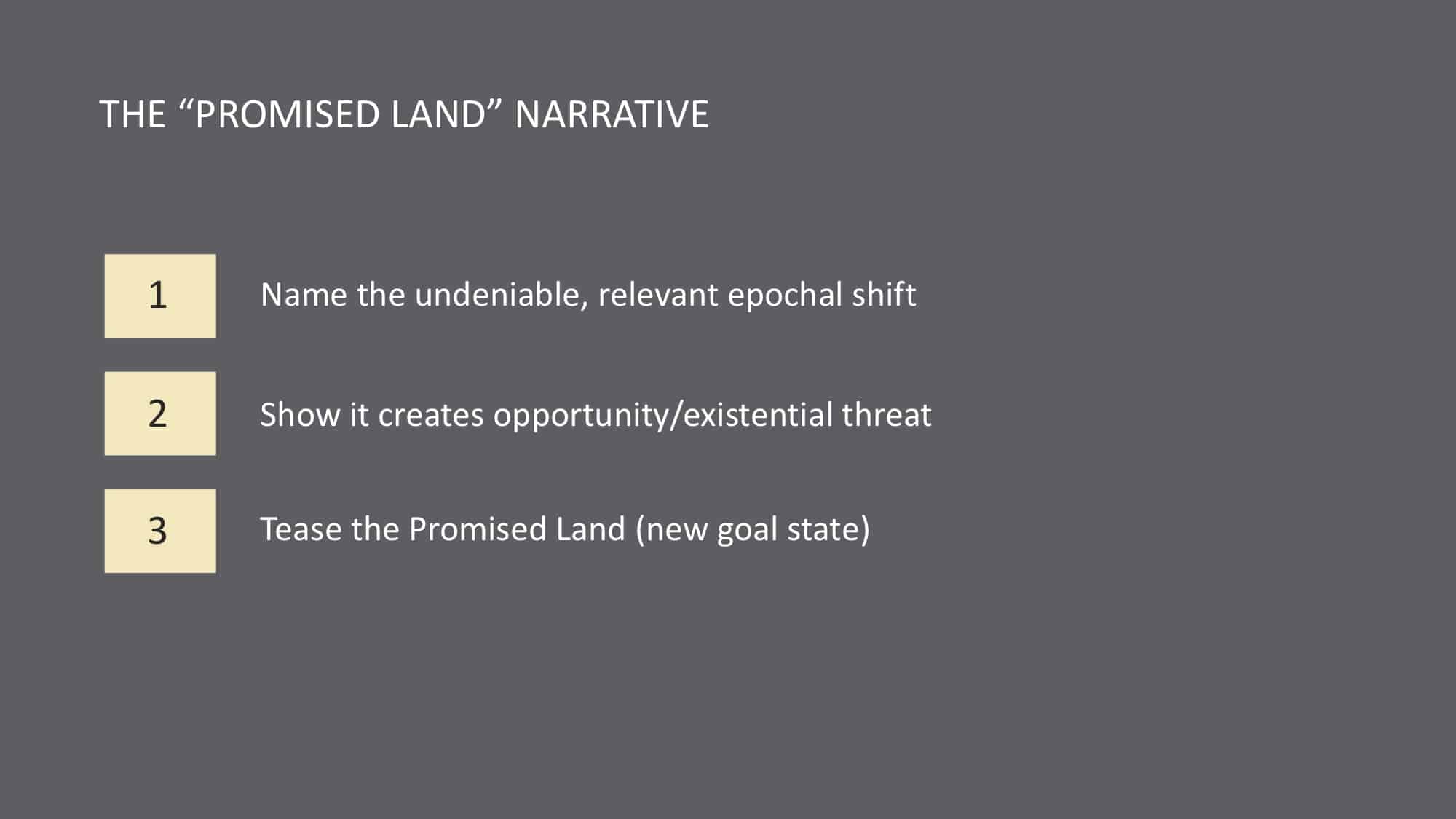
It’s been incredibly rewarding and gratifying to hear from people all over the world who have read that Zuora post and some others I’ve written who’ve adopted this formula and told me how valuable it’s been for them. One of the HYPERGROWTH speakers told me backstage that they revamped their pitch based on it. But I’ve also seen it done really badly. Many people have also emailed me, “Hey, I tried this. It didn’t work.”
And when I ask, usually 9 times out of 10, they’ve basically taken the Zuora deck and then pasted their own logo and words into that deck. Just like a great movie has its own flow, you want to follow principles, not fill in templates. And so I’d like to share with you some of the narratives that I’ve helped teams build with this framework to give you a sense of how some of the variations can happen in the real world.
How to Create Your Own Promised Land
Logikcull
Logikcull has raised around $39 million for its platform that helps legal teams sort through and categorize documents and data – what’s called the discovery phase of a lot of legal proceedings. And when Andy Wilson, their founder and CEO, contacted me, he said, “We have a mission statement, but it’s all about why us. Can you help us frame the urgency from the customer point of view?”
So he wasn’t saying why. He didn’t use the language why you now, but he’s basically asking for that. I like to start off by training the leadership team on this framework, but then quickly talk to customers. And we spoke to a lot of Logikcull customers, and we asked them a lot of questions, but the biggie was this one: How is having Logikcull more valuable for you now? What has changed in the world such that having it now makes it more valuable than it would’ve been to have it even just a few years ago?
And we heard this very consistent story from the people who do this discovery work, “Hey, I used to have to scan boxes and boxes of documents, and that was tough. But now the number of data sources as well as the data, the volume has skyrocketed. So we’re literally having data from things like drones and cars that now has to be considered in discovery proceedings. Data that’s coming from things in your home; data from, of course, the cloud; all the documents we’re creating, all the emails, all the conversations, all the chats that someone’s ever done in their entire life.”
So Andy and his leadership team summed up the shift this way: Now everything is discoverable. This is a huge change for the people who do this work. How does it give rise to an existential threat or a huge opportunity? Well, the deadlines haven’t changed, so you either fail miserably or look like a star. Andy’s co-founder at Logikcull, is really into heavy metal. And so he argued very hard for this slide to come next in the pitch:
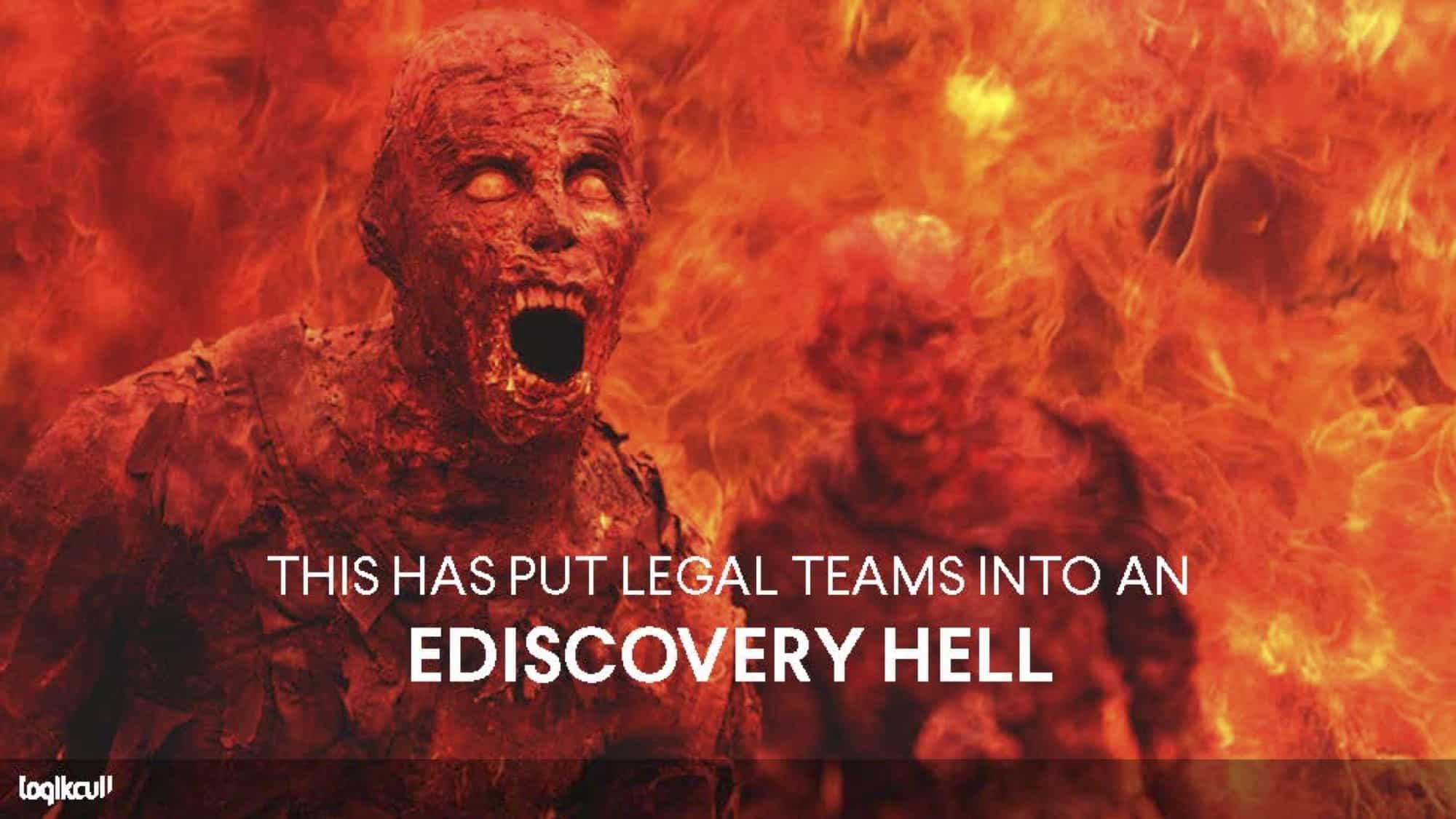
And I was a bit skeptical. But actually Andy says the reaction to it is priceless. The reason we’re telling this story this way is not to educate. It’s not even to challenge. It’s to get emotional confirmation from the buyer that we understand their story. Andy says prospects see this slide, and they say, “Oh, yeah. That’s me.” Or, “That’s my colleague Jane every Friday afternoon.”
And then you have to pitch the Promised Land. So Logikcull asked, what if discovery could be instant, no matter how big a pile of data you’re dealing with? Andy credits this narrative with helping him close a Series B earlier this year, and he says it’s even helped in recruiting. One thing I found fascinating is that, like a lot of companies, one of his biggest challenges is getting new reps up to speed as they scale. So Andy measures time to first win – the time it takes for a new rep, from when they join the company, to close their first deal. And Andy says this narrative has slashed that time by more than 50% from around 60 days to under 30 days.
Zaius
I’ll give you another look at this framework. Zaius, which has raised over $50 million, competes in the very crowded marketing technology space. And sure enough, when I met Mark Gally, the CEO, he told me that differentiation was his biggest challenge. The sales people would do their pitch, and people would ask, “So how are you different from X, Y, and Z?” It would always happen. And so Zaius has a lot of happy customers, mostly B-to-C marketers. And so again, we asked this question, “What has changed in your world such that having Zaius is more valuable now than it would have even been a few years ago?”
And over and over again, we heard this: One woman, a B-to-C marketer who uses Zaius, literally said this almost verbatim, “It used to be that it was okay if you pulled the same two, or three levers to kind of goose repeat purchase. They kind of worked, and there wasn’t that much else you could do. But now that’s not good enough anymore in part because of Amazon, in part because there’s just so many more touch points, so many more levers at a marketer’s disposal.”
So what’s the Promised Land? This is controversial on Mark’s team. Some people were like, “Hmm, do marketers really want to be engineers and scientists?” But when we look back at the interviews, what they were saying is that, yes, to be successful, we have to be doing experiments. And as soon as Mark’s team began telling this story, which was pretty recently, they tell me that these “how are you different from X” questions just went away.
Collective Health
Now let’s look at Collective Health. They’ve raised over $250 million for their platform that lets employers deliver a great healthcare experience to their employees. I trained Sarahjane Sacchetti, their CMO, on my framework, and she really ran with it. She is the one who talked to customers, and the thing she heard over and over again, especially from C-Suite execs, was that enterprises had taken over more and more of the functions that health insurance companies typically performed. I always thought that your company pays the premium, and then if your people get sicker than usual, then the insurance company bears that risk. Well, it turns out that more and more companies, especially larger ones, are bearing that risk themselves so that the health insurance companies increasingly are really just the doctor network.
So one day I’m driving down 101, and I see this.
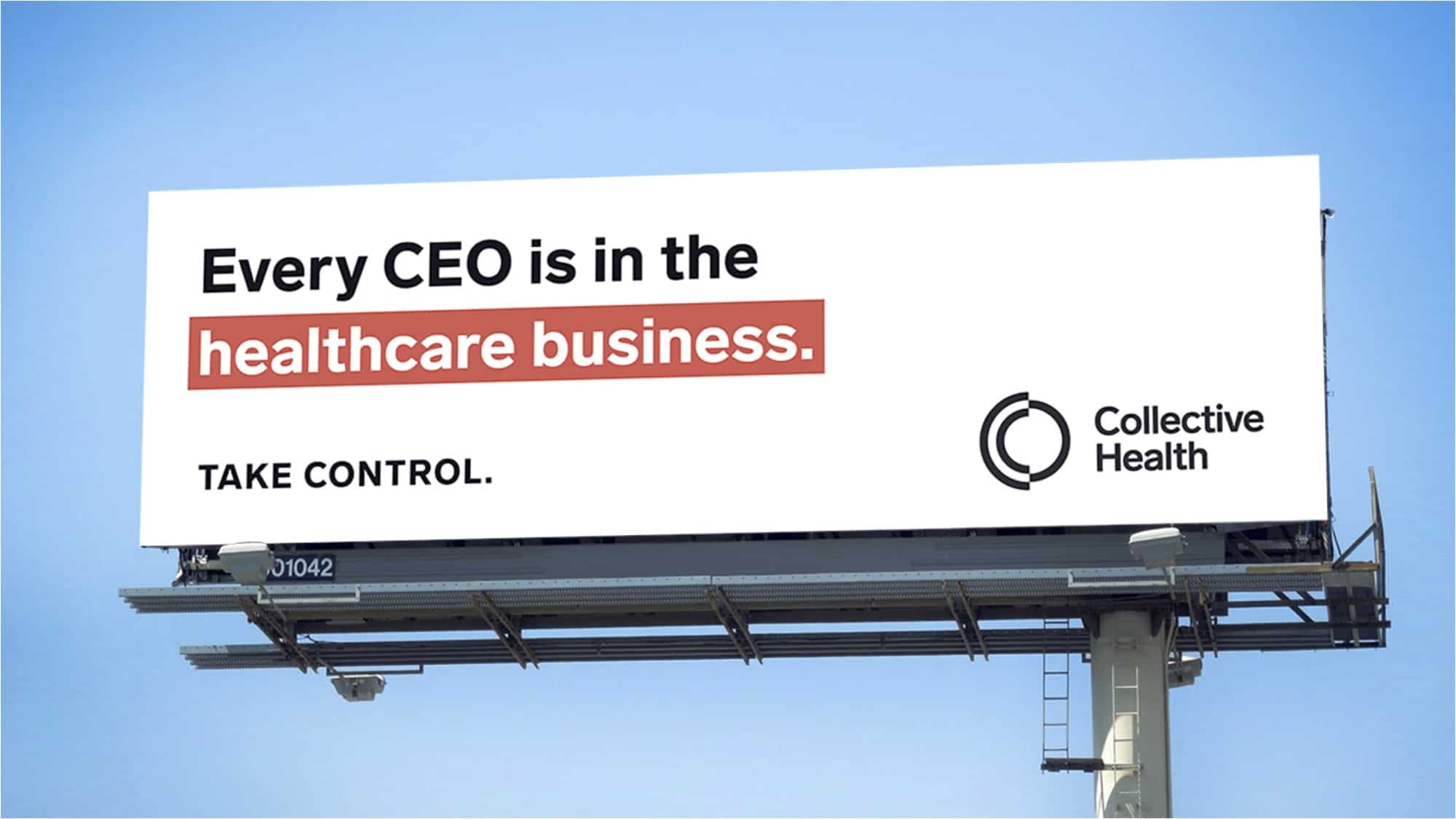
SJ tells me that her sales team literally gets leads from CEOs who are driving down the highway like I was who say, “Yes, this is happening to me. Let’s talk.” Of course the real benefits don’t come from the sales deck or a billboard. They come from the entire company really committing to this Promised Land narrative.
The Key To Achieving Hypergrowth
And when that happens, you see a bunch of really great things happening that I think are really the keys to achieving hypergrowth. You see, first of all, everyone rallying around one mission, not some self-centered mission of the company, but around the mission of getting customers to the Promised Land. In this kind of Promised Land culture, when you do start talking about the product, it’s always positioned as arms for the battle, not just a solution to some problem.
Let’s go back for a minute to Zaius. So after setting up the story, engineering repeat purchase as this kind of Promised Land, they ask, well, what’s the monster that’s blocking you from getting there? And for so many teams, they know because they’ve talked to these people and they’re in the space, it’s that the marketing data and the campaign tools are in separate systems which makes it almost impossible for these B-to-C marketers to do the kind of experiments they want to do.
So of course all of Zaius’s features are aimed at slaying this monster. Mark Gally told me that this is the slide where his sales team gets the nods, the yeah, yeah, yeah, where they really understand how Zaius is different.
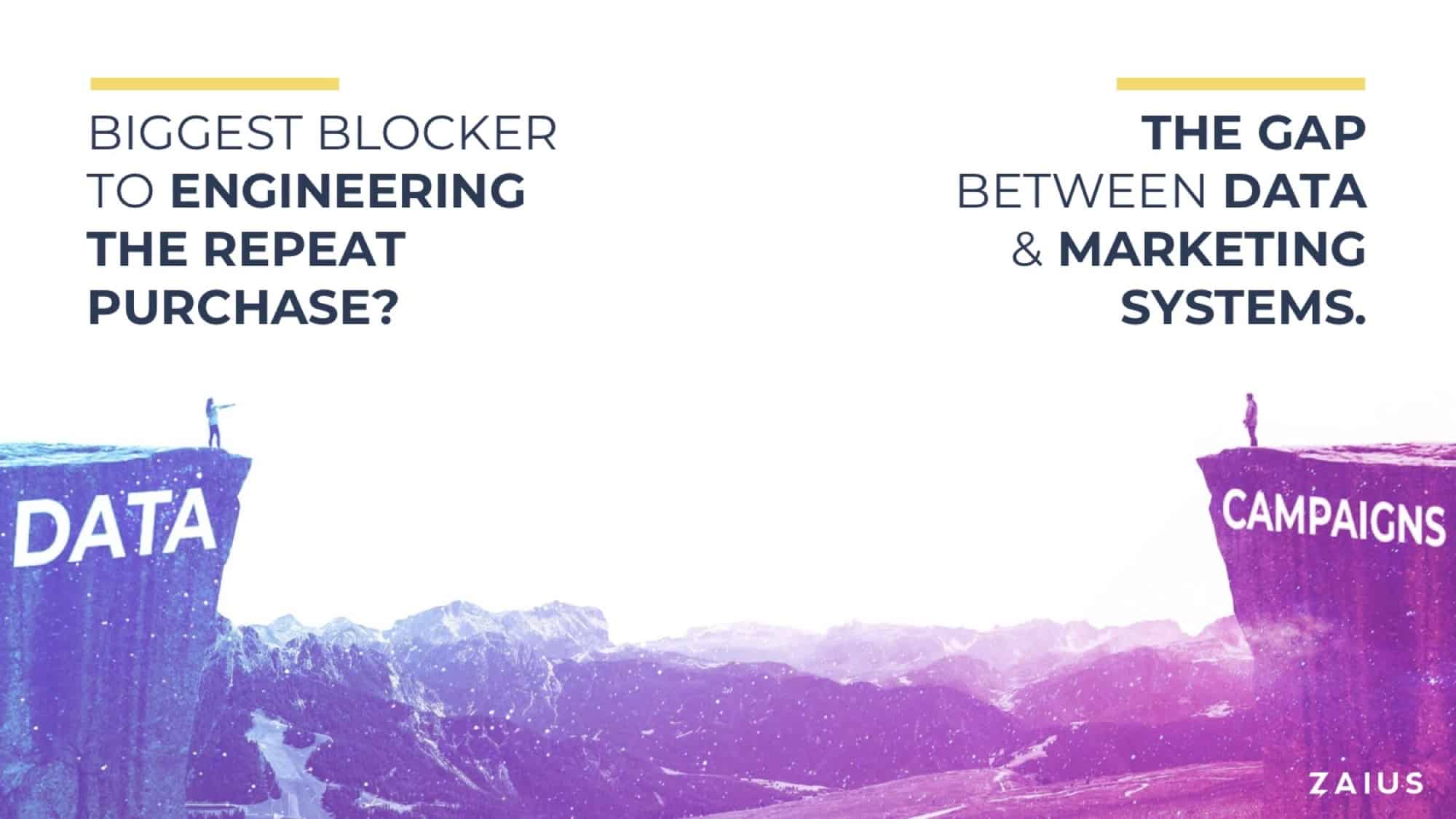
Which is funny. They’re not saying, “Here’s how we’re different.” They’re telling the story, and they’re getting that result. The most telling sign of this kind of Promised Land culture is that the thing you’re selling is not the solution to problem, but you’re selling belonging.
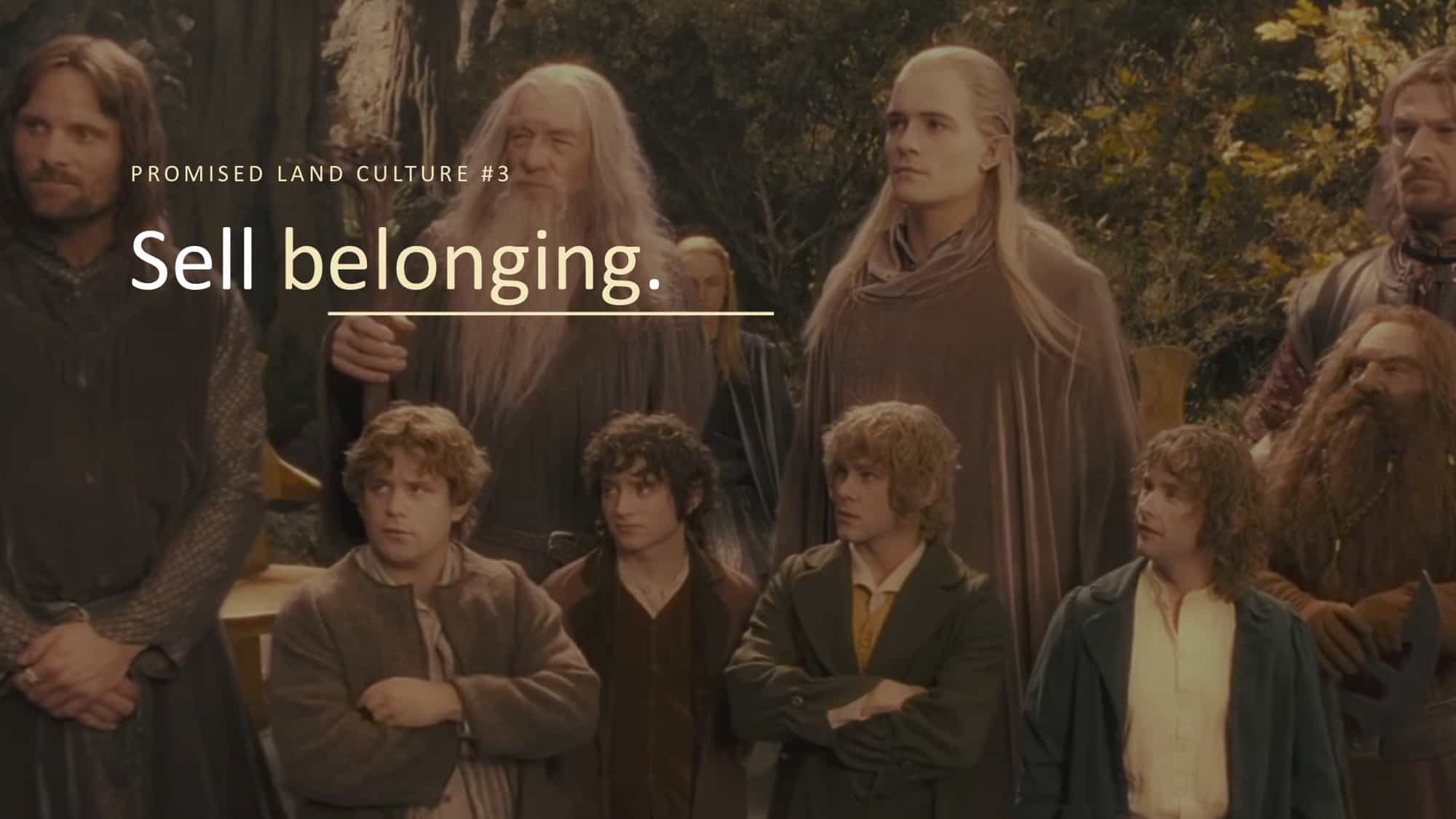
In Maslow’s hierarchy of needs, after the physiological ones and the safety, belonging is the most fundamental. And the Promised Land narrative is really an invitation to join others who want to reach it.
The great brands have always known this. For them, purchase is not solving a problem, first and foremost. It’s joining a group of people, a movement that shares the belief. Of course the great magazines, too, every story, every issue is all organized around how we’re going to help this reader get to the Promised Land.
At Drift’s HYPERGROWTH East, VP of Marketing Dave Gerhardt offered to pick up attendees at the airport. And I think this is not just going above and beyond, which it is, it’s also telling the Drift story about being there for customers now.
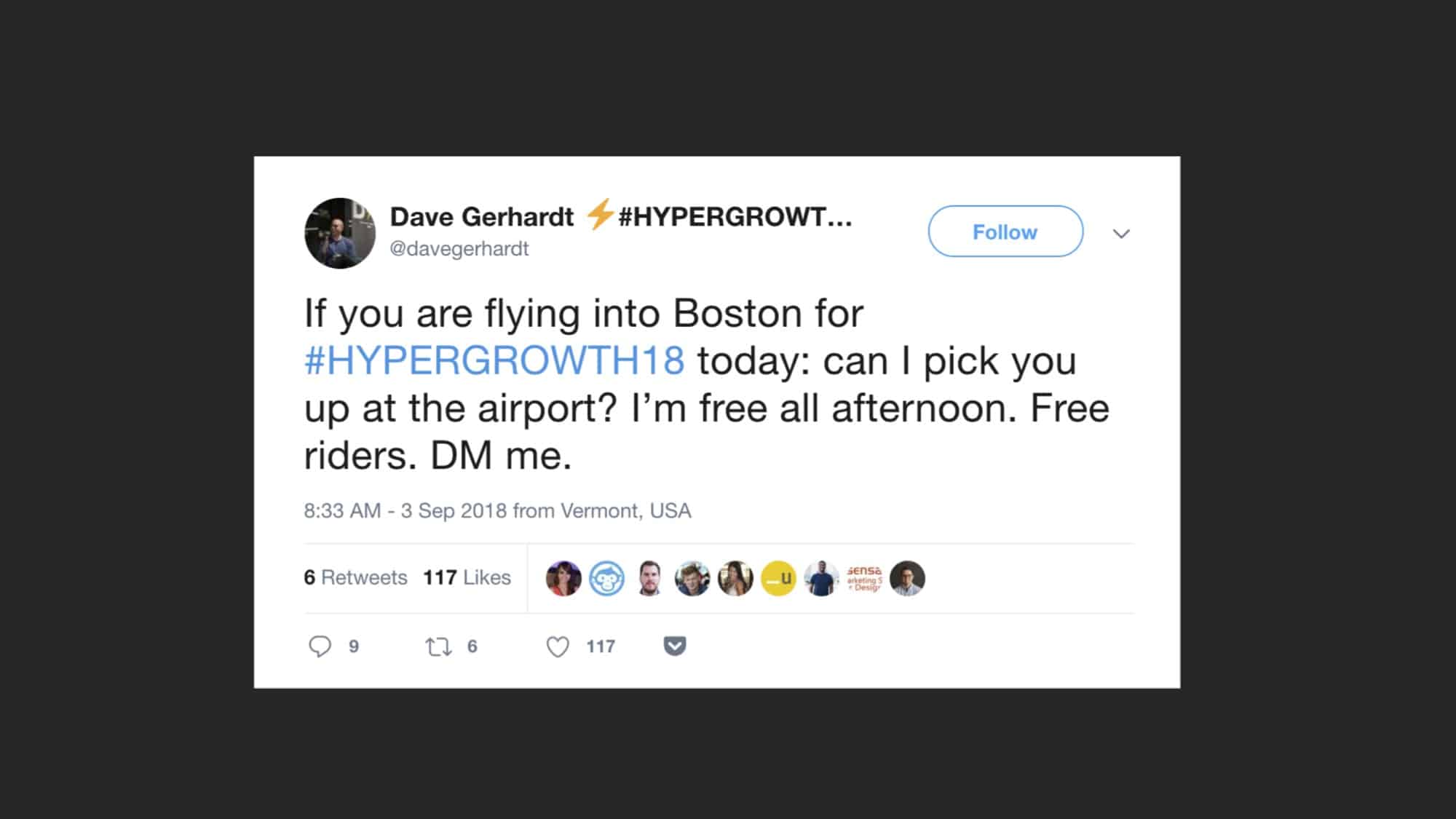
The Story Is The Strategy
A few years ago Ben Horowitz, a partner at Andreessen Horowitz, made this very astute observation, that if you have a muddled story, you have a muddled strategy, that the story is the strategy. There’s so many implications of this, that the story is not first and foremost a marketing responsibility, but I think a CEO responsibility.

But also that, if you’re telling a “why us” story, here’s how we’re different, really, here’s how we’re great, no matter how much you’re saying you’re customer centric, you’re really not.
Even a restaurant can tell a Promised Land story. So I was born in Brooklyn, but if you live in San Francisco long enough, you really give up on finding great pizza. But one day a few years ago, someone told me that there was this new place in the Mission where it was pretty good, and it reminded him of – he was also from back east – pizza we had in New York. And so I tried it, and it actually was really great. And the fourth or fifth time I went there, I looked up at the menu board, and I noticed right at the top there is essentially a Promised Land message.
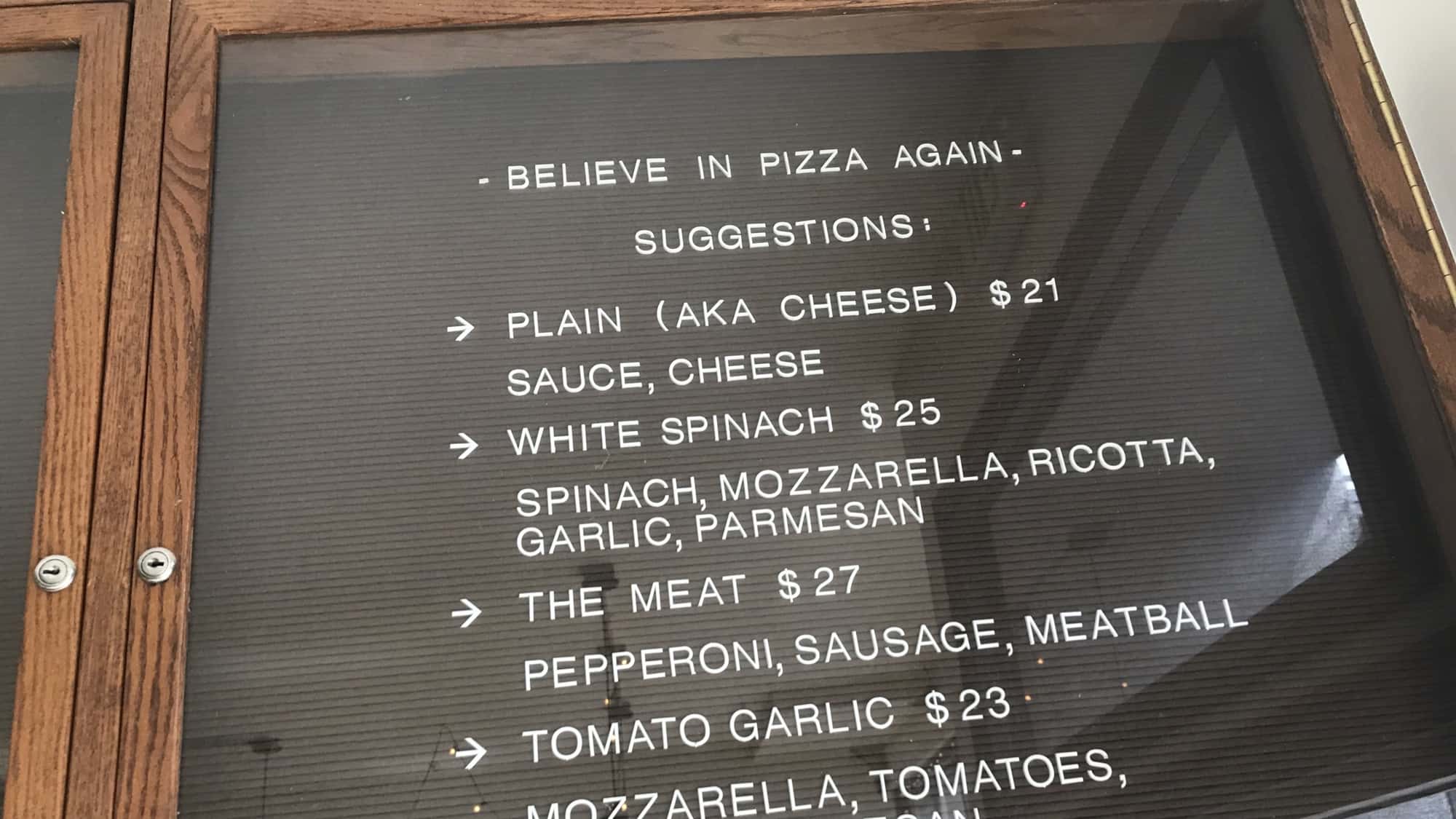
And if they’d asked me, “How have we changed your life?” Which is actually another question I like to ask customers when we’re building the story, I think I would have said something like this. I would have said in this world in which I had given up faith, that they restored my faith again. The owner of this restaurant, by the way, his name is Tom, he told me that this came to him in a dream and that he’s only barely begun to execute on this, that he’s delivered on only a tiny fraction of this. And this actually gets to the other benefit of telling the story this way, which is that it’s not about the product. Product is usually important. He’s very serious about it, but ultimately it’s not about that. And if you can show people the light, show them that goal, and they say, “Yes, I want to get that,” then they’re more likely to come along with you on the product journey.
So my invitation to you today is maybe see what happens when you stop telling the story as why us and instead start talking about why you now. Instead be like Moana’s grandma.
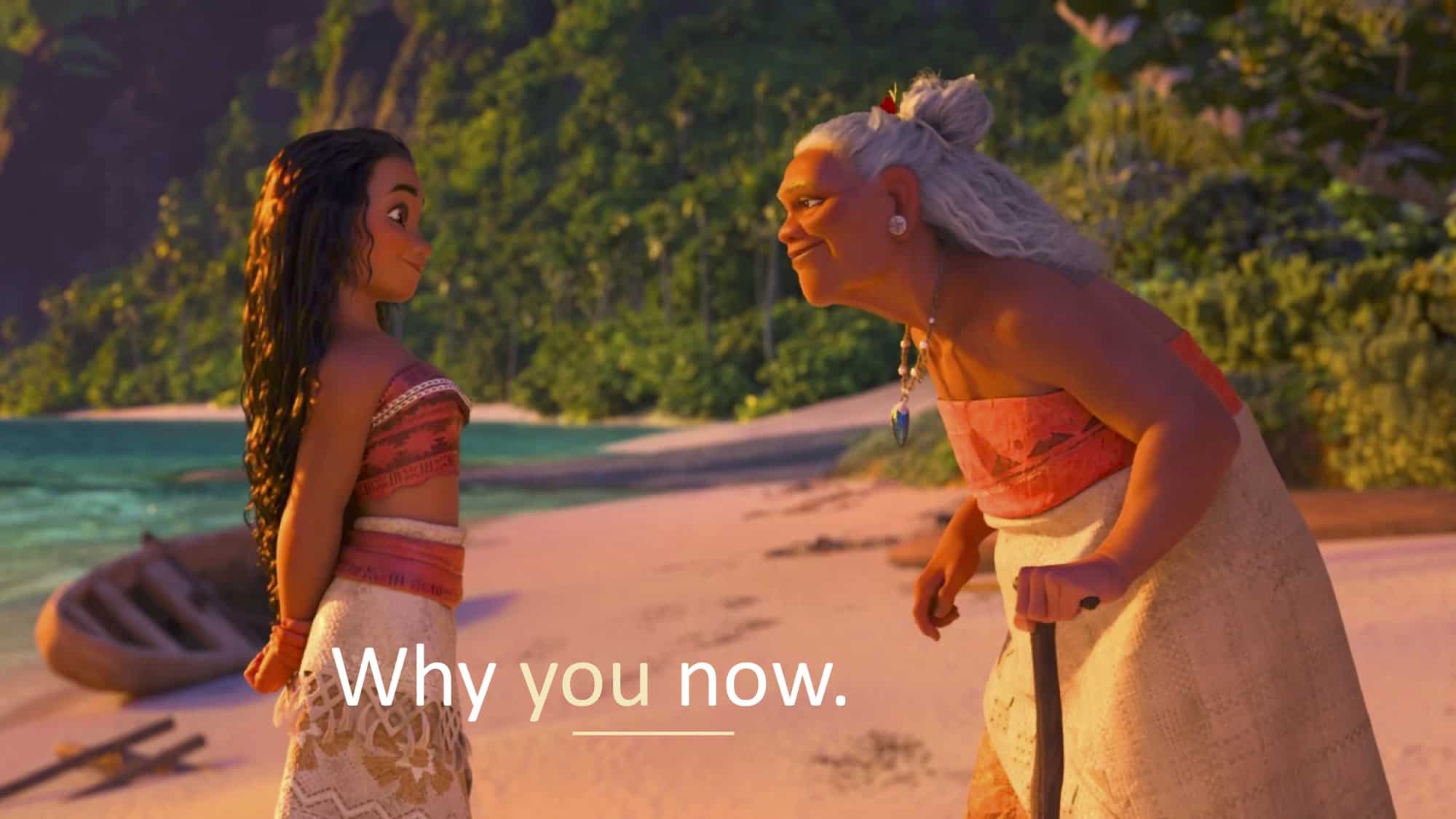
Talk about what has changed such that your customer must let loose of the status quo and sail beyond the reef (sorry for the Moana spoilers). If you do give this a try, let me know how it went.
—
You can connect with Andy Raskin on LinkedIn here.





